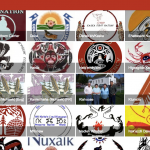Web-based instruction design is based on the particular epistemologies, learning theories and goal expectations of the designers themselves. In this paper, the authors trace the design processes involved for indigenous Australian learners preparing to enter university and the importance of cultural localization, which incorporates local values, styles of learning and cognitive preferences of the target population.
McLoughlin, C., & Oliver, R. (2000). Designing learning environments for cultural inclusivity: A case study of indigenous online learning at tertiary level. Australasian Journal of Educational Technology, 16(1).
Retrieved from https://ajet.org.au/index.php/AJET/article/view/1822/887
